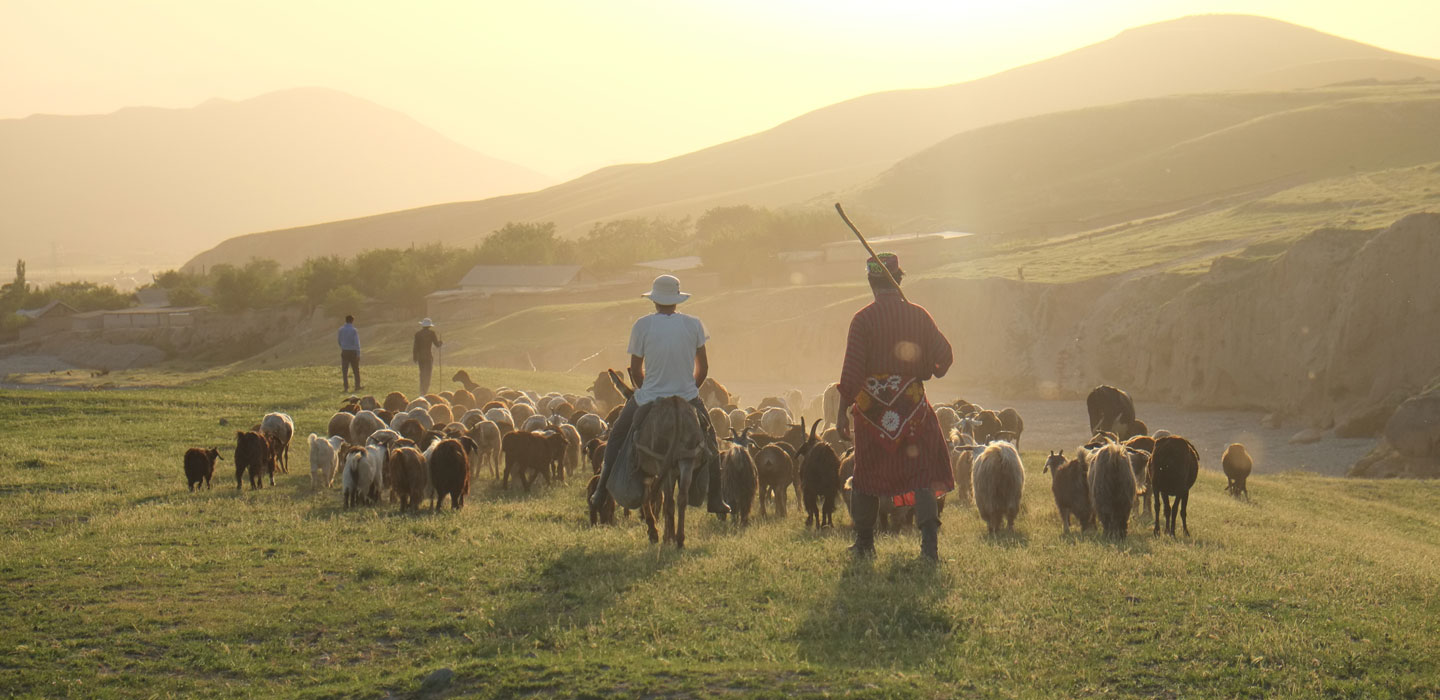Migration, agriculture and food systems – Understanding links to achieve better outcomes
IFAD Asset Request Portlet
Asset Publisher
Migration, agriculture and food systems – Understanding links to achieve better outcomes
By David Suttie

Opportunities for migration and mobility have long influenced people's lives and livelihoods, especially in rural communities. By their very nature, mobility for nomadic pastoral communities is central to their traditional way of life; more broadly, rural people have often moved around in response to the uncertainties and seasonality of agricultural production.
More people are moving now than ever before. Latest estimates place the number of international migrants at around 244 million in 2015, of which approximately 20 million are refugees. The factors driving these trends are complex, context-specific and intersecting. As such, making generalizations is difficult and prone to create misconceptions, but one thing that may be stated is that agriculture, food systems and rural development are tightly linked to both drivers and outcomes of migration.
Agriculture, food systems and rural development influence and are influenced by migration
Painting a simple picture may be misleading. On the one side, there are many examples of smallholders and other rural people who feel compelled to migrate to larger towns and cities as a consequence of the lack of economic opportunities in the rural and agricultural sphere. In this context, growth of agricultural productivity, linkages with markets and the development of the rural non-farm economy can be expected to reduce migration pressures. Anecdotal evidence indicates that where investments have been made in rural areas – for example in improving infrastructure, enabling smallholders in accessing technology, training and services – this has occurred. The experience of IFAD projects tends to bear this out.
On the other hand, when agricultural productivity and incomes increase, this often has the effect of galvanizing non-farm employment which, in many cases, enhances the opportunities available to people to exit agriculture in rural areas. As farms become more profitable, they invest more in inputs, services and machinery. As farmers' incomes increase, they spend more of their incomes on non-food goods such as household equipment, clothing and leisure. All of this serves to create opportunities in the non-farm sector. Therefore, agricultural development actually contributes to the development of enhanced opportunities for labour mobility to non-farm and non-traditionally rural sectors.
While agriculture and rural development is necessary to stop people being compelled to migrate to support their families, the very nature of its development actually creates opportunities for mobile workers. These opportunities have been shown to support smallholder farming families in smoothing incomes and providing capital to invest in their farms.
We also have to consider the conditions under which this mobility takes place: are working conditions adequate? Are housing and essential services available for migrant works? Do women face particular disadvantages and risks?
What can policy-makers do to help people achieve the best outcomes for farm families?
Achieving the best outcomes means people should not be compelled to leave farming and rural areas by poverty and hunger, at the same time - conditions should be in place to support those who choose to explore opportunities associated with mobility to succeed. Along these lines, several entry points emerge.
First, agriculture and food systems are key to providing adequate economic opportunities that avoid the problematic distress related to forms of migration. Leveraging opportunities to develop these sectors to achieve better outcomes in terms of rural workers' incomes, as well as providing nutritious food for rural and urban consumers, is essential. Priorities include coordinating and tightening agri-food value chains links – including investing in better transport and institutional infrastructure - so that farmers benefit from market opportunities and local employment is generated. In this regard, approaches such as District Value Chain Committees have shown promising results.
Second, enabling people to take advantage of opportunities associated with optional (that is, non-forced) migration involves initiatives such as enshrining the rights of migrants to access essential services (e.g. education, health, housing, etc) in legal frameworks, implementing measures to reduce costs associated with sending remittances, programmes to match labour supply and demand and offer requisite training, and supporting migrant organisations, including linking them to relevant policy processes such as those related to workers' rights.
Third, modern technologies offer opportunities to provide services to mobile people. Providing information though mobile phones, e-platforms, community radio and social media to mobile workers offers much potential, in particular in reaching women who are often under-represented among those accessing training and services.
New mind sets for new challenges
Overall, new mindsets and new approaches are needed to deal with an increasingly mobile world. Agriculture, rural development and food systems have key roles to play in both averting the risks associated with distress related migration and in promoting and realizing opportunities associated with mobility.
This post first appeared at Farming First
Publication date: 04 September 2019
